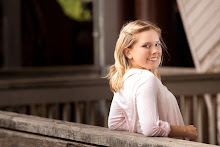Humans have been improving photography since Aristotle’s first observation of a pinhole camera in 350 BC, with milestones such as the introduction of the Lumière brothers' panchromatic plate in 1894 and Willard Boyle and George Smith’s invention of the charge-coupled device (CCD) in 1969.
Today, improvements to digital single-lens reflex (DSLR) cameras, which combine optics with digital imaging sensors, have introduced astrophotography to the wider public. Since its establishment in 1990, the Hubble Space Telescope has used astrophotography to render inspiring images of planets, stars, and solar systems.
In the photo above, Alexander Stepanenko has used astrophotography techniques to capture the aurora borealis -- the northern lights. The fascinating phenomenon is caused by the collision of solar wind and magnetospheric-charged particles in high-altitude atmosphere.
Using a DSLR camera (Nikon D-800), Stepanenko captured the photons and thermal noise of the northern lights. Wilderness areas, far from the light pollution of cities, are ideal places to photograph the night sky. Stepanenko captured this image from Guba Opasova, an isolated inlet on the Barents Sea, near Murmansk, Russia.
Stepanenko is one of 32 contestants in the People’s Choice Award competition in the SPIE International Year of Light Photo Contest. Judges have already chosen three overall winners, but now it's your turn to choose. SPIE is providing a prize of US $500 to the People's Choice winner. Online voting continues through 15 August.
Stepanenko has been documenting Russian villages for the past 28 years. After serving in the Soviet Army, Stepanenko started his career as a photojournalist, studying journalism at Moscow University in 1985. From the early 2000s Stepanenko’s work has been published in magazines and photo collections in Russia, Sweden, France, and Belgium.
For more information about Stepanenko's work, see Stepanenko’s website.
Other People’s Choice finalists who demonstrated astronomy or the night sky in their photography are:
 |
| “Natural Light and Artificial Light,” by Di Chang, at Empire State Building, New York, USA, 29 December 2013. Inspired by the sheer amount of light humans use, Chang’s photo demonstrates light pollution in New York City. |
 |
| “Night Over Bardenas,” by Inigo Cia, Bardenas Desert, Spain, 18 August 2014. Cia’s image shows how the long exposure of a camera can reveal the light in a dark sky. See Cia’s portfolio. |
 |
| “Fuerteventura Milky Way,” by Federico Giussani, Fuerteventura, Canary Islands, Spain, 8 August 2013. As a self-taught photographer fond of astrophotography, Giussani has contributed to several exhibitions, publications, and festivals in Italy. See Giussani’s blog. |
"Shane Adaptive Optics (AO) Laser Guide Star/ShARCS," by Laurie Hatch (USA), taken at the Lick Observatory, Mt. Hamilton, California, USA, 10 September 2014. The Lick Observatory
carries out high profile programs discovering exploding starts in the
nearby universe and planets orbiting other stars. Adaptive optics is now considered almost indispensable for imaging distant objects.
"Observing the Sky," by Anze Osterman (Slovenia), Soca Valley, Slovenia, taken 29 August 2014. Photographers need
light to make an image. Astrophotography requires long exposures, a
cable release, and a rigid tripod.
"Milky Way in Life," by Jadsada Saetiew (Thailand), taken in Phayao, Thailand, 16 June 2014. Like Osterman's photo, the human on the ground is shining a flashlight on an already illuminated night sky.
"Rocky Planet of Night Lights," by Tunç Tezel (Turkey), taken in Uludağ National Park, near Bursa, Turkey, with a fisheye lens 4 July 2013. Tezel's photo was taken from an elevation of 2539 meters and shows the lights of several towns and villages and the Milky Way.
See more contestants' photos in previous posts in this series:







Comments
Post a Comment